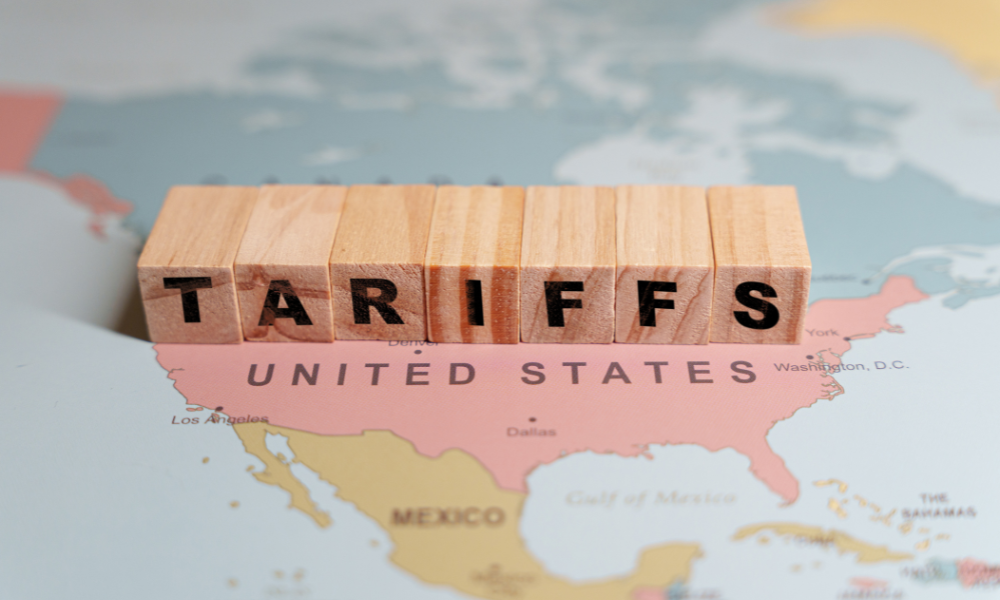Three providers explain why they like bonds with covered calls now, how advisors can differentiate between very similar products

Once in a while the ETF industry goes in on a trend. In the space of three weeks, four Canadian ETF issuers have launched six funds with the same core strategy: hold a portfolio of US treasury ETFs and sell options on them to earn a higher yield.
Hamilton ETFs was the first to launch their U.S. Bond Yield Maximizer ETF (HBND) in the middle of September with a “10%+” initial target yield. They were followed by the Harvest Premium Yield Treasury ETF (HPYT) launched at the end of the month targeting a 15% yield.
On October 4th Evolve ETFs and Horizons ETFs entered the fray. Evolve launched BOND with a 10% target yield. Horizons launched a suite of three ETFs offering bond income with covered calls at different durations, trading under the tickers SPAY, MPAY, and LPAY with 7.5%, 9% and 10.5% yields respectively.
“These are products that have been on our list for some time, and we saw somebody else file first, somebody who might have had an ex-employee from our shop,” says Naseem Husain, senior VP and ETF strategist at Horizons ETFs. “As soon as we saw those filings we pushed our papers out too. That was the land grab. They got to take the ‘first fixed income covered call ETF’ designation, we got the first suite.”
A common underlying strategy
Notably, all six of the ETFs launched recently in Canada hold the iShares 20+ Year Treasury Bond ETF (TLT). Four of the six have an over 50% allocation to TLT, which has a deep enough options market to generate the necessary volume of premiums for these ETFs.
Beyond just a race for first place, Husain believes the strategy behind these ETFs is well suited to our current ‘higher for longer’ rate environment. He sees us at or near the peak of a still-volatile rate cycle. As rates have risen, bond values have compressed significantly and left many advisors feeling burned by what they lost on fixed income. Naseem says that the prospect of a bond exposure with an enhanced yield component can help deliver income for clients while they ride this volatile stretch of the fixed income market, and deliver some upside when rates eventually fall.
That view was echoed by Kaitlin Thompson, VP of Product Strategy at Evolve ETFs. She explained that a volatile stretch in a market like fixed income can be especially advantageous for options premiums, which move higher with volatility. Even though covered call options trade upside potential for income, Thompson argues an active options strategy — like what’s exercised on BOND and the other new ETFs — can strike the right balance.
“This product can work extremely well in different rate environments. Even if rates go straight to the floor and TLT shoots up 30% in one month, we will probably give up some upside from those option contracts, but we’ll be able to take that into account and write further out of the money next month and, hopefully, turn some of that volatility into income,” Thompson says.
Differentiating between similar ETFs
Given the similarity in underlying holdings and overarching strategy, these four ETF issuers have worked on ways to differentiate their offerings. Harvest ETFs President & CEO Michael Kovacs previously told WP that their HPYT ETF is more focused on yield than appreciation. That ETF is targeting a 15% yield and its portfolio managers are empowered to write calls on up to 100% of the ETF’s holdings. The remaining issuers have all launched with roughly 50% write levels to balance income with potential for capital appreciation.
By launching a suite, Horizons has gone out of its way to differentiate its products. SPAY, MPAY, and LPAY all have different exposures to long or short duration bond ETFs, allowing advisors to choose their duration mix. At the same time, the managers for these ETFs are empowered to write put options as well as calls on their holdings, allowing for another form of potential premium capture should bond markets turn in a different direction.
Evolve’s case hinges on the expertise of their team, managing both fixed income and covered call option ETFs. Thompson argues that their combined expertise and active management should set BOND up for outperformance compared to its similar competitors. Evolve is also launching a mutual fund version of BOND. Both the ETF and mutual fund versions of the strategy are launching with fee waivers which will last until March 31st of 2024. She believes that as advisors look between these strategies, they’ll have to look under the hood and speak with their wholesalers to work out which — if any — of these ETFs are best for their clients.
“I find these can be easily compared, but the way each manager is running their strategy or picking their securities can be very different,” Thompson says. “You need to look at the actual portfolio…and understand if you want to own those securities. And in terms of the covered call strategy, it’s always important to understand if the strategy is being run actively or not.
“[These ETFs] seem like they’re all the same, but when you actually look closely at them, they offer some slightly different nuances.”



